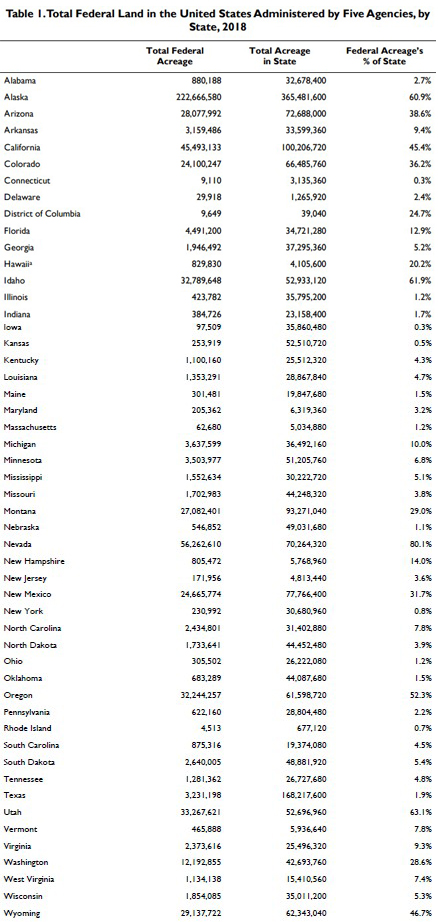Payton Perspective: It’s time for reparations for descendants of African slaves in America

Using federal land, not cash
By Allen D. Payton, Publisher

During this Black History Month, as I’ve been arguing for several years, I believe it’s time for all Americans to agree reparations promised to freed slave families following the Civil War in 1865 should finally be fulfilled – but to their descendants.
First, let me point out the fact – especially to my fellow Republicans who might oppose them – that reparations were first, a Republican idea, ordered by Union Army Major General William Tecumseh Sherman, and supported by President Abraham Lincoln, the nation’s first Republican president. As a reminder, the Republican Party was formed to abolish slavery, and Lincoln and the Union Army successfully fought the Civil War to accomplish that goal.
40 Acres & A Mule
You may have heard the phrase “40 acres and a mule”, which was made more popularly known by movie actor and director Spike Lee who labeled his production company “40 Acres and a Mule Filmworks”. But you may not know that the phrase originated with reparations. That’s because Special Field Orders No. 15 were issued by Sherman on January 16, 1865, before the Civil War ended that May, granting “a plot of not more than (40) forty acres of tillable ground” to families, “made free by the acts of war and the proclamation of the President of the United States He also later ordered the army to lend mules to the freed slaves for their farming efforts.
The orders included the confiscation of 400,000 acres of plantation land along “a strip of (Atlantic) coastline stretching from Charleston, South Carolina to the St. John’s River in Florida, including Georgia’s Sea Islands and the mainland 30 miles in from the coast.” The land was to be divided into parcels on which approximately 18,000 formerly enslaved families and other Black people then living in the area would be settled.
The purpose was to provide for the freed slaves both a means to earn a living and support themselves, and the result would have been giving them an asset that could be passed on to future generations.
According to History.com, “The freedmen set out to begin working their new land immediately, with a group of 1,000 settling on Georgia’s Skidaway Island. In subsequent months as many as 40,000 freedmen settled on the redistributed land.”
Order Rescinded
Unfortunately, after Lincoln’s assassination just three months after the order was issued, his running mate on the National Union Party ticket in 1864, Democrat Vice President Andrew Johnson, following his ascension to the presidency, rescinded Sherman’s order. He returned to Confederate owners the 400,000 acres of land. Thus, the freed slaves were denied the land they had been granted and reparations were never offered to them by the federal government, again.
Why Reparations Now?
Some people argue that it’s been over 150 years, so why do Black Americans need reparations, today? My initial response is that they’re long past due. But my main answer is two-fold. One is the fact that a major issue among most Blacks in the U.S., today is a lack of asset ownership, including homes, real estate, investments and businesses. For example, the average Black family has one-tenth the assets of the average white family in the U.S.
Disparity in Household Wealth
According to the U.S. Census Bureau’s Wealth and Asset Ownership Detailed Tables: 2020, Table 1. Median Value of Assets for Households, from the Survey of Income and Program Participation, Survey Year 2021, the median net worth for all households was $140,800. However, when broken down by ethnicity, the median “Black alone” household had one-tenth the assets of the median “White alone” household, or $18,430 compared to $178,500. The disparity is even greater when compared to the median “White alone, non-Hispanic” household which had assets of $217,500.
My argument for the disparity and second one in favor of why reparations, now is the fact that for nearly 250 years, almost all Blacks in the U.S. couldn’t own property because they were property, nor did they get paid. They also couldn’t get an education. So, the rest of us, whose ancestors were never subjected to the horrors and evil of chattel slavery, in effect had a 250-year head start!
Yes, I’ve heard the arguments about the Irish, which is my ancestry, and how they were mistreated, or others who were indentured servants. But those were not the same as being a slave sold, bought and owned by someone else, as well as their future generations to follow.
A Federal Responsibility, Not State or Local
Second, reparations are not a state or local issue, but a federal responsibility. Long before the day the Declaration of Independence was signed on July 4, 1776, and in spite of the fact it enshrined the statement that, “that all men are created equal, that they are endowed by their Creator with certain unalienable Rights, that among these are Life, Liberty and the pursuit of Happiness,” and then from the signing of the U.S. Constitution on September 17, 1789, to Lincoln’s issuance of the Emancipation Proclamation and the end of the Civil War, our federal government allowed slavey. It continued for another 65 years after the Constitution was ratified on May 29, 1790, for a total of 246 years since the first African slaves were brought to our country in 1619. So, again, reparations are a federal responsibility.
(A side, historical note on the Three-Fifths Compromise and clauses in the Constitution. It was not intended by the framers to further devalue the lives of slaves, but to reduce the influence in Congress by the slave states, by preventing them from having additional members in the House of Representatives and a greater number of electors in presidential elections. The slave states wanted to include the slaves in the census count, while the free states didn’t want them included at all. The compromise determined that three out of every five slaves were counted when establishing a state’s total population. A benefit to the slave states was it reduced the amount of taxes they had to pay to the federal government.
In Article I, Section II, Clause III of the Constitution, the Three-Fifths Compromise is stated as:
“Representatives and direct taxes shall be apportioned among the several states which may be included in this Union, according to their respective numbers, which shall be determined by adding to the whole number of free persons, including those bound to service for a term of years, and excluding Indians not taxed, three fifths of all other persons.”
See also James Madison’s writings in Federalist Paper No. 54 in which he argues that slaves were both property and people, and thus required some degree of representation).
But I digress. Back to the issue at hand.

Reparations Are About Land, An Asset
Third, to my Democrat friends I remind them, reparations were initially land and that’s what they still should be, today, not cash. They should be about helping Black Americans own an asset for their use, from which to generate income and to pass on to future generations.
The federal government owns over one-fourth of the land in the U.S. According to a 2020 report and 2023 report by the Congressional Research Service, it amounts to “roughly 640 million acres, about 28% of the 2.27 billion acres of land in the United States”.
Looking at a map you’ll see the federal land is “heavily concentrated in 12 western states (including Alaska), 3 where the federal government owns roughly half of the overall land area.” That includes 45.4% of California, 60.9% of Alaska, 38.6% of Arizona, 36.2% of Colorado, 20.2% of Hawaii, 61.9% of Idaho, 29.0% of Montana, 80.1% of Nevada, 52.5% of Oregon, 63.1% of Utah, 28.6% of Washington and 46.7% of Wyoming. The federal government also owns 12.9% of Florida.
Much of that land is either in national parks (79.9 million acres), in national forests (192.9 million acres) or is farm and ranch land leased to farmers and ranchers. Five federal agencies administer most of it, including the Bureau of Land Management (BLM), Fish and Wildlife Service (FWS), and National Park Service (NPS) in the Department of the Interior (DOI) and the Forest Service (FS) in the Department of Agriculture. with the Department of Defense controlling 8.8 million acres, and 4% administered by multiple other agencies.
So, my proposal is to give to all Black Americans, who can prove they are a descendant of a slave in America, some of that federal land. It can either be given out on an individual or family basis.
While not all Black Americans are descendants of a slave in the U.S. – for example, Vice President Kamala Harris, whose father descended from a Jamaican slave, would not qualify – for simple calculation purposes let’s say all of them are. Blacks currently make up about 13% of the U.S. population of about 330 million people for a total of 40 million people.
If we gave every Black American one, two or even five acres, that would be 40, 80 or as much as 200 million acres which would still leave 440 million acres remaining for ownership and use by the federal government. (Frankly, I don’t understand why the federal government needs to own so much land, especially ranch land for grazing, anyway.)
The new owners could do what they want with the land: farm it, drill it for oil, gas or water, mine it, lease it, swap it with other reparation land recipients, build a home on it, borrow against it, or perhaps form joint ventures with neighboring property owners and develop new communities, even cities. But I believe the one stipulation should be the land could only be sold to another descendant of an American slave. Then, it could be passed on to future generations.
Another argument I’ve heard or read about reparations is, why should people today have to pay anything when neither they nor their family ever owned slaves. This approach addresses that concern. By giving out federal land, there would be no cost to current taxpayers. While it might reduce revenue to the federal government from a reduction in leased lands, that’s a small price to pay for addressing this 160-year-old matter once and for all time.

No One Has to Participate
Some Black people have stated publicly they don’t need or want the help and find it offensive that they be offered reparations. Let’s be clear, no one who is qualified has to participate in a federal reparations program. But I believe most would. Who wouldn’t want free land?
Those who chose to participate would, of course, have to prove their status, and some form of reparations commission or government agency would have to be formed to verify their status and manage the distribution of the land grants. Once verified, program participants would be entered into a lottery and the property could be distributed in periodic drawings. It could even be televised nationally as the participants’ numbers are drawn, and advertising could be sold, and the revenue shared with the federal government to make up for the loss of land lease revenue.
One Time Program May Take Several Years
To sum up, I say it’s time, once and for all, to fulfill the commitment of reparations ordered in 1865 and give portions of federally owned land to the descendants of slaves in the U.S. It might take several years to accomplish, but I believe we should and could start right away.
Once the land has been distributed and all who want it received their share, then that would be it. We’d be done. Everyone would be happy, and there could be no more complaining. The agency would be disbanded, the issue would be put to rest, and it would be up to the new landowners to make do with theirs what they can.
Now, all we need is for Members of Congress and U.S. Senators to introduce the idea and move it forward.
the attachments to this post:

Federal Land Administered by 5 Agencies

Map of all U.S. Federal Land 3-3-05

Western Federal Lands Managed by 5 Agencies map

Federal Lands in Alaska & Hawaii Managed by 5 Agencies map
























